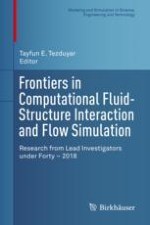2018 | OriginalPaper | Chapter
Space–Time Computational Analysis of Tire Aerodynamics with Actual Geometry, Road Contact, and Tire Deformation
Authors : Takashi Kuraishi, Kenji Takizawa, Tayfun E. Tezduyar
Published in: Frontiers in Computational Fluid-Structure Interaction and Flow Simulation
Publisher: Springer International Publishing
Activate our intelligent search to find suitable subject content or patents.
Select sections of text to find matching patents with Artificial Intelligence. powered by
Select sections of text to find additional relevant content using AI-assisted search. powered by
